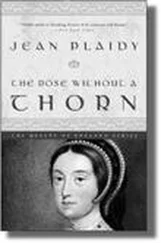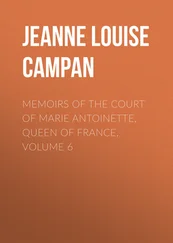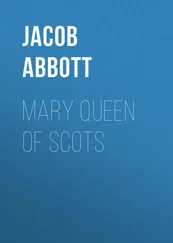Henry Bell - Life of Mary Queen of Scots, Volume 1 (of 2)
Здесь есть возможность читать онлайн «Henry Bell - Life of Mary Queen of Scots, Volume 1 (of 2)» — ознакомительный отрывок электронной книги совершенно бесплатно, а после прочтения отрывка купить полную версию. В некоторых случаях можно слушать аудио, скачать через торрент в формате fb2 и присутствует краткое содержание. Жанр: foreign_antique, foreign_prose, на английском языке. Описание произведения, (предисловие) а так же отзывы посетителей доступны на портале библиотеки ЛибКат.
- Название:Life of Mary Queen of Scots, Volume 1 (of 2)
- Автор:
- Жанр:
- Год:неизвестен
- ISBN:нет данных
- Рейтинг книги:5 / 5. Голосов: 1
-
Избранное:Добавить в избранное
- Отзывы:
-
Ваша оценка:
- 100
- 1
- 2
- 3
- 4
- 5
Life of Mary Queen of Scots, Volume 1 (of 2): краткое содержание, описание и аннотация
Предлагаем к чтению аннотацию, описание, краткое содержание или предисловие (зависит от того, что написал сам автор книги «Life of Mary Queen of Scots, Volume 1 (of 2)»). Если вы не нашли необходимую информацию о книге — напишите в комментариях, мы постараемся отыскать её.
Life of Mary Queen of Scots, Volume 1 (of 2) — читать онлайн ознакомительный отрывок
Ниже представлен текст книги, разбитый по страницам. Система сохранения места последней прочитанной страницы, позволяет с удобством читать онлайн бесплатно книгу «Life of Mary Queen of Scots, Volume 1 (of 2)», без необходимости каждый раз заново искать на чём Вы остановились. Поставьте закладку, и сможете в любой момент перейти на страницу, на которой закончили чтение.
Интервал:
Закладка:
Some of the provisions in the marriage-contract between Francis and Mary, are sufficiently remarkable to deserve being recorded. The jointure assigned by it to the Queen, provided her husband died King of France, is 60,000 livres, or a greater sum, if a greater had ever been given to a Queen of France. If her husband died only Dauphin, the jointure was to be 30,000 livres. The eldest son of the marriage was to be King of France and Scotland; and if there were no sons, the eldest daughter was to be Queen of Scotland only, with a portion of 400,000 crowns, as a daughter of France, – every younger daughter being allowed 300,000 crowns. Should her husband die, Mary was to be at liberty either to remain in France or return to Scotland, with an assurance that her jointure would be always duly paid her. The Dauphin was to bear the name and title of King of Scotland, and enjoy all the privileges of the crown-matrimonial.
The marriage, for which so many preparations had thus been made, was solemnized in the church of Notre Dame, the ceremony being performed by the Cardinal of Bourbon, Archbishop of Rouen. Upon this occasion, the festivities were graced by the presence of all the most illustrious personages of the Court of France; and when Francis, taking a ring from his finger, presented it to the Archbishop, who, pronouncing the benediction, placed it on the young Queen’s finger, the vaulted roof of the Cathedral rung with congratulations, and the multitude without rent the air with joyful shouts. The spectacle was altogether one of the most imposing which, even in that age of spectacles, had been seen in Paris. The procession, upon leaving the church, proceeded to the palace of the Archbishop, where a magnificent collation was prepared, – largess, as it moved along, being proclaimed among the people, in the name of the King and Queen of Scots. In the afternoon, the royal party returned to the palace of the Tournelles – Catherine de Medicis and Mary sitting together in the same palanquin, and a Cardinal walking on each side. Henry and Francis followed on horseback, with a long line of princes and princesses in their train. The chronicler of these nuptials is unable to conceal his rapture, when he describes the manner in which the palace had been prepared for their reception. Its whole appearance, he tells us, was “light and beautiful as Elysium.” During supper, which was served upon a marble table in the great hall, the King’s band of “one hundred gentlemen” poured forth delicious strains of music. The members of Parliament attended in their robes; and the princes of the blood performed the duty of servitors – the Duke of Guise acting as master of the ceremonies. The banquet being concluded, a series of the most magnificent masks and mummeries, prepared for the occasion, was introduced. In the pageant, twelve artificial horses, of admirable mechanism, covered with cloth of gold, and ridden by the young heirs of noble houses, attracted deserved attention. They were succeeded by six galleys, which sailed into the hall, each rich as Cleopatra’s barge, and bearing on its deck two seats, the one filled by a young cavalier, who, as he advanced, carried off from among the spectators, and gently placed in the vacant chair, the lady of his love. A splendid tournament concluded these rejoicings.
During the whole of these solemnities, every eye was fixed on the youthful Mary; and, inspired by those feelings which beauty seldom fails to excite, every heart offered up prayers for her future welfare and happiness. She was now at that age when feminine loveliness is perhaps most attractive. It is not to be supposed, indeed, that in her sixteenth year, her charms had ripened into that full-blown maturity which they afterwards attained; but they were, on this account, only the more fascinating. Some have conjectured that Mary’s beauty has been extolled far beyond its real merits; and it cannot be denied that many vague and erroneous notions exist regarding it. But that her countenance possessed in a pre-eminent degree the something which constitutes beauty, is sufficiently attested by the unanimous declaration of all cotemporary writers. It is only, however, by carefully gathering together hints scattered here and there, that any accurate idea can be formed of the lineaments of a countenance which has so long ceased to exist, unless in the fancy of the enthusiast. Generally speaking, Mary’s features were more Grecian than Roman, though without the insipidity that would have attached to them, had they been exactly regular. Her nose exceeded a little the Grecian proportion in length. Her hair was very nearly of the same colour as James V.’s – dark yellow, or auburn, and, like his, clustered in luxuriant ringlets. Her eyes, – which some writers, misled by the thousand blundering portraits of her scattered everywhere, conceive to have been gray, or blue, or hazel, – were of a chestnut colour, – darker, yet matching well with her auburn hair. Her brow was high, open, and prominent. Her lips were full and expressive, as the lips of the Stuarts generally were; and she had a small dimple in her chin. Her complexion was clear, and very fair, without a great deal of colour in her cheeks. Her mother was a woman of large stature, and Mary was also above the common size. Her person was finely proportioned, and her carriage exceedingly graceful and dignified. 19 19 Mezeray, Castelnau, Brantome, Thuanus, Chalmers, Miss Benger.
In this description of Mary’s personal appearance, we have placed a good deal of reliance on the research and accuracy of Chalmers. It will be observed, that our account differs, in many essential particulars, from that of Robertson, who says – “Mary’s hair was black, though, according to the fashion of that age, she frequently wore borrowed locks, and of different colours. Her eyes were a dark gray; her complexion was exquisitely fine; and her hands and arms remarkably delicate, both as to shape and colour. Her stature was of an height that rose to the majestic.” Where Robertson discovered that Mary’s hair was black, or her eyes gray, he does not mention. That her eyes were not black, we have the direct testimony of Beal, Clerk to the Privy Council of England, who was ordered by Cecil to be present at the death of the Scottish Queen, and who describes her as having “chestnut-coloured eyes.” As to her hair, and her other features, though Melville, in his Memoirs, certainly seems to imply that the former was auburn, yet, as he does not expressly say so, we suspect correct conclusions can be arrived at only by a reference to the best authenticated portraits which have been preserved of Mary. This, however, is far from being a criterion by which opinions should be rashly formed. There are few persons in the whole range of history, likenesses of whom have been more eagerly sought after; and, in proportion to the anxiety manifested to secure originals, has been the temptation to mislead and deceive. Almost all the paintings said to be originals of Mary Queen of Scots, are the impositions of picture-dealers. When the demand for these paintings became general, it was not at all unusual to despatch emissaries over the Continent to pick up every picture, the costume and general appearance of which in the least resembled the Scottish Queen. During Mary’s life, and for some time after her death, the fame of her beauty, and the interest attached to her fortunes, induced numerous ladies of rank, who flattered themselves that they were like her, to have portraits painted in the style then well understood by the phrase à la Mary Stuart . There was, in particular, a celebrated Continental beauty of those days – a Countess of Mansfeldt – (we speak on the authority of a living artist of celebrity), who resembled Mary in many particulars, and all whose portraits (nor were they few in number) when they afterwards came into the hands of the picture-dealers, were affirmed to be Maries. Thus, in the lapse of years, the truth became so involved in uncertainty, that even Robertson, allowing himself to be too hastily misled, has lent his name to the dissemination of error.
Читать дальшеИнтервал:
Закладка:
Похожие книги на «Life of Mary Queen of Scots, Volume 1 (of 2)»
Представляем Вашему вниманию похожие книги на «Life of Mary Queen of Scots, Volume 1 (of 2)» списком для выбора. Мы отобрали схожую по названию и смыслу литературу в надежде предоставить читателям больше вариантов отыскать новые, интересные, ещё непрочитанные произведения.
Обсуждение, отзывы о книге «Life of Mary Queen of Scots, Volume 1 (of 2)» и просто собственные мнения читателей. Оставьте ваши комментарии, напишите, что Вы думаете о произведении, его смысле или главных героях. Укажите что конкретно понравилось, а что нет, и почему Вы так считаете.












